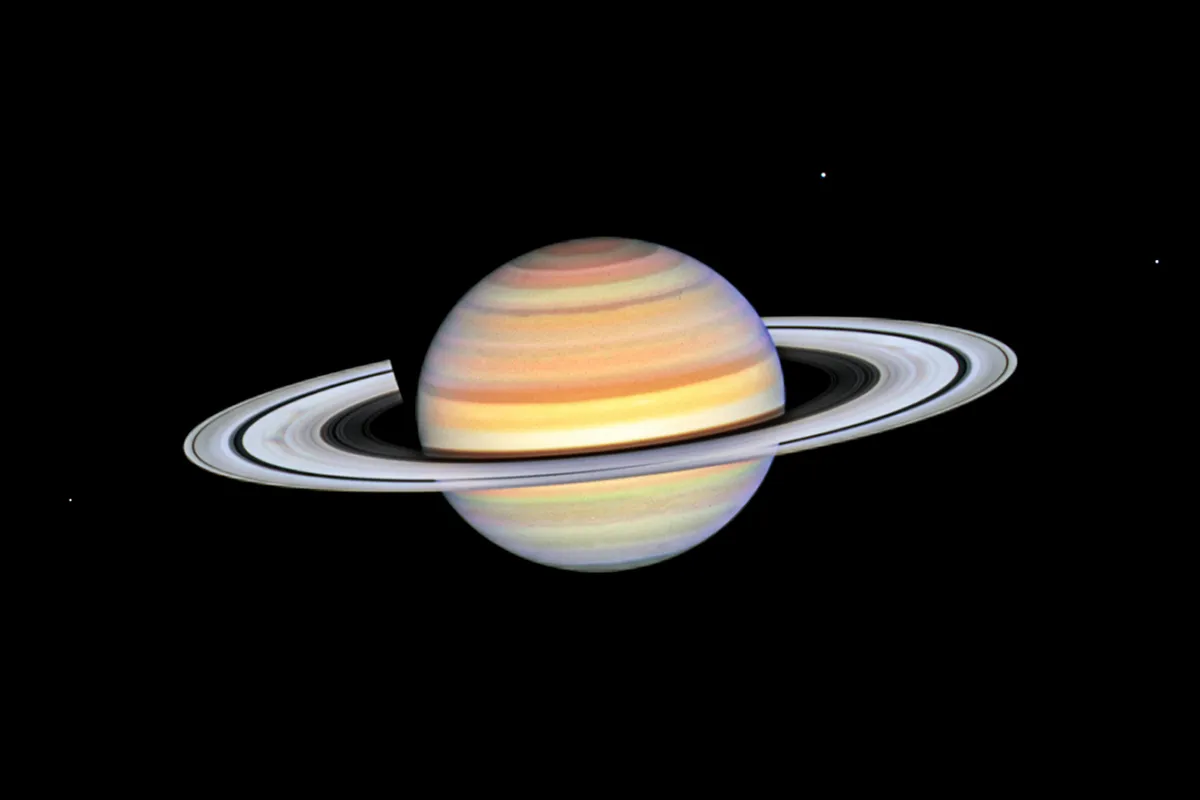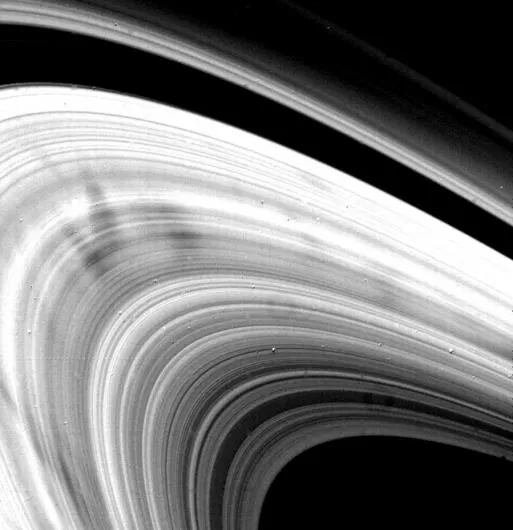The Hubble Space Telescope has captured an amazing view of features known as 'spokes' in the icy rings that surround the planet Saturn.
On 22 October 2023, Hubble snapped this view of Saturn when the planet was 850 million miles from Earth, revealing the intricate detail of the ring spokes.

What are Saturn's ring spokes?
Saturn's ring spokes are transient features. They rotate along with the planet's rings, but only appear for 2 or 3 rotations of the rings around Saturn.
During active periods, new spokes regularly appear, adding to the intricate patterns within the icy ring material.
The spokes may look tiny compared with Saturn, but their length and width can be longer that Earth's diameter.
Exploring Saturn's ring spokes

Saturn's ring spokes were first imaged by the Voyager 2 spacecraft in 1981, and were subsequently seen by the NASA Cassini mission, which ended in 2017.
The Hubble Space Telescope's images of the spokes reveal that their frequency is seasonal.
Hubble's observations are part of the Outer Planets Atmospheres Legacy (OPAL) project that monitors weather changes on the four outer planets of the Solar System.
Hubble images show the spokes first appearing in OPAL data in 2021, but only on the morning (left) side of Saturn's rings.
Data shows both the number and contrast of the spokes vary with Saturn's seasons, which last about 7 years.

"The leading theory is that spokes are tied to Saturn's powerful magnetic field, with some sort of solar interaction with the magnetic field that gives you the spokes," says OPAL lead scientist Amy Simon of NASA Goddard Space Flight Center.
"We are heading towards Saturn equinox, when we'd expect maximum spoke activity, with higher frequency and darker spokes appearing over the next few years."
As equinox on Saturn approaches, the planet and its rings are less tilted away from the Sun.
This means that the stream of charged particles emanating from the Sun - known as the solar wind - interacts more intensely with Saturn's magnetic field, producing more spokes.
While planetary scientists think this interaction could push dust or ice above the ring to form spokes, there is no definitive cause known currently.
But continued Hubble observations may one day help solve the mystery of Saturn's ring spokes.
